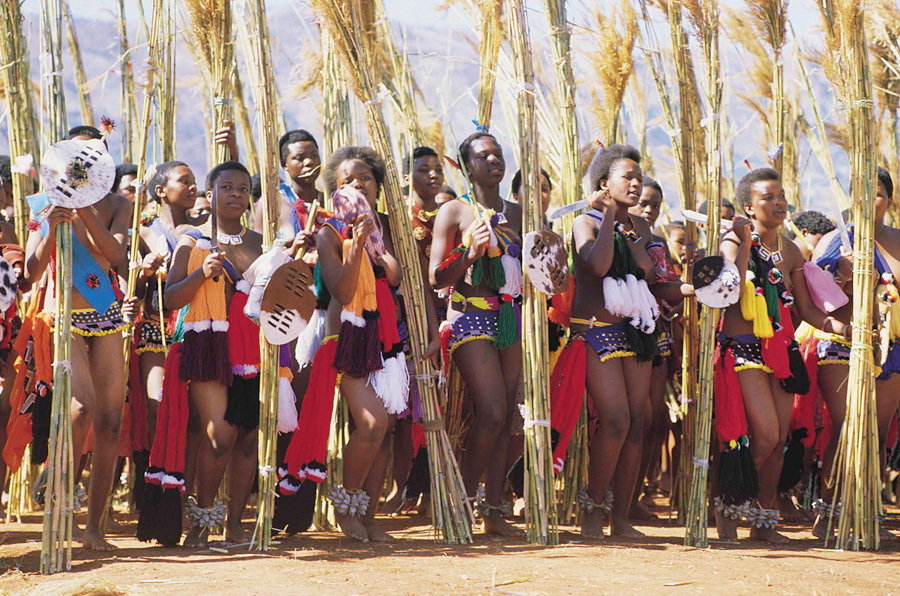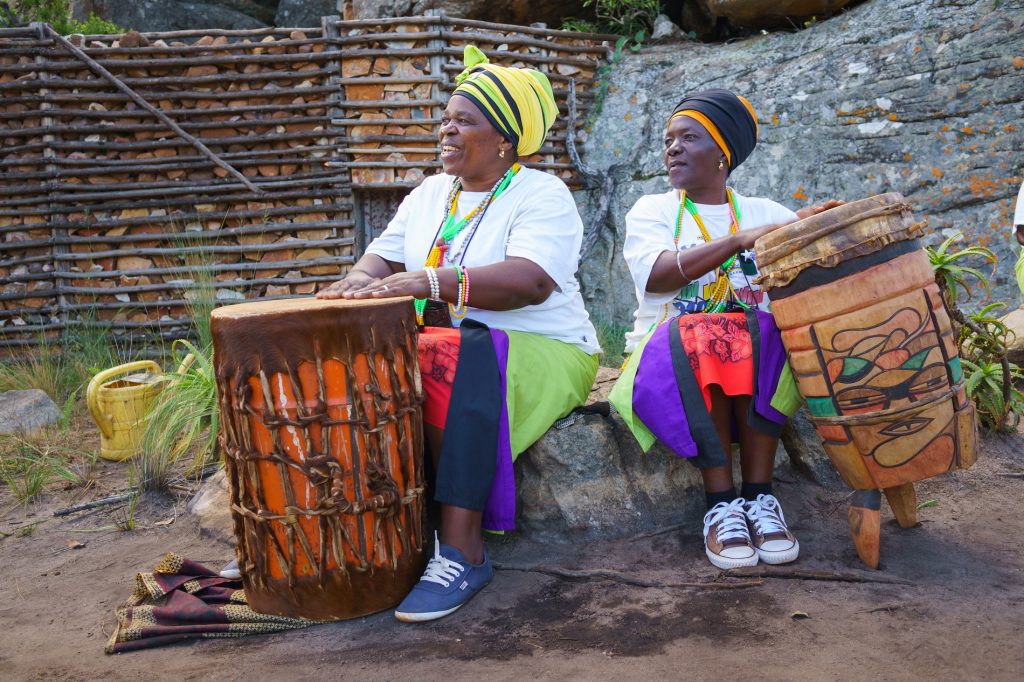South African Culture Today Fundamentals Explained
South African Culture Today Fundamentals Explained
Blog Article
Some Known Facts About South African Culture Today.
Table of ContentsSouth African Culture Today Fundamentals ExplainedThe Best Strategy To Use For South African Culture TodayThe Ultimate Guide To South African Culture Today8 Simple Techniques For South African Culture TodayThe Ultimate Guide To South African Culture TodayFacts About South African Culture Today Revealed
This adheres to with singing and drum beating. The couple then satisfy with the senior citizens and discuss the importance of their union. A matter of importance in Zambian villages is the passing away of loved ones. All participants of the village placed money, time and effort together for the burial of the deceased.During the mourning duration; males remain outside the home and the ladies stay inside your home of the deceased. After talking about the deceased, the town strolls to the location of burial to say their last bye-byes. Songs and dance is a very essential aspect of the Zambian society. The different tribal systems have their own dance kinds; nonetheless, makishi prevails amongst all tribes.
Facts About South African Culture Today Uncovered
When it pertains to songs, drums are used the most, with a range of drumming events. In Zambia, bulk of individuals are Christian; Protestant and Roman Catholic. There are small groups of Muslims and Hindus, with the remainder complying with neighborhood indigenous tribal ideas.

South African heritage and culture is profoundly varied, and contains several groups of people that each have their own traditions and ideas. Having such a variety of people and societies is what makes South Africa so special. In truth sense of the expression, we are a rainbow nation.
South Africa has roughly 3 hundred thousand Portuguese individuals living in it. Making it the 7th on the checklist of nations with the most Portuguese individuals in it outside of Portugal. Portuguese is not just a culture, yet it is likewise a language and a nationality. Portuguese individuals originate from the nation of Portugal in Europe, nevertheless, due to Portugal (like lots of other nations in Europe) exploring the globe and dominating various other nations during the 15th 20th centuries, South Africa has what we call Portuguese South African's living in it.
Fascination About South African Culture Today
Among the famous attributes of the topography is a plateau that covers almost two thirds of the center of the nation. The plateau facility climbs toward the southeast, where it climaxes in the Drakensberg variety, part of a cliff that divides the plateau from the seaside locations. The Drakensburg consists of Champagne Castle, the highest optimal in the country.
The region north of the Witwatersrand, called the bushveld, slopes downward from east to west toward the Limpopo River, which forms the worldwide border. The western section of the plateau, the middleveld, likewise comes down in the direction of the west and differs in altitude between the highveld and bushveld. Between the Drakensburg and the eastern and southern shoreline, the land descends to the sea.
Nearer the coastline there is a low-lying plain called the eastern lowveld. Southwest of the plateau the country becomes progressively much more arid, giving way to the stony desert of the Great Karroo, verged on the east by the lower, better watered plateau of the Little Karroo. Dividing the completely dry southerly interior from the sandy littoral of the southerly shore and West Cape is an additional variety, the Langeberg.
More About South African Culture Today
The nation's dig this racially, ethnically, and politically separated history has actually created national and subnational icons that still work as icons of the nation, and others symbols that are approved only by particular groups. The monoliths to white settler occupation and political prominence, such as the Afrikaner Voortrekker ("pioneer") Monolith in Pretoria and the Rhodes Monument recognizing the British colonial empire building contractor and Cape prime priest Cecil Rhodes, continue to be sectarian signs.
The first contemporary inhabitants were the San ("bushman") hunter-gatherers and the Khoi ("Hottentot") individuals, who rounded up animals (South African culture today). The San may have existed for countless years and left proof of their presence in hundreds of ancient cavern paintings ("rock art"). Bantu-speaking clans that were the ancestors of the Nguni (today's amaZulu, amaXhosa, amaSwazi, and vaTsonga individuals) and Tswana-Sotho language groups (today's Batswana and Southern and Northern Basotho) moved below east Africa as very early as the fifteenth century

Both former republics of the Orange Free State and Transvaal (South African Republic) were established by Afrikaner settlers who defeated and dispossessed the Basotho and Batswana. Lesotho would have been forcibly integrated right into the Orange Free State without the expansion of British security in 1869. The utmost marriage of the nation arised from the South African War (18991902) between the British and both Afrikaner republics, which minimized the nation to ruin at the start of the twentieth century.
Afrikaners traditionally considered themselves the just true South Africans and, while providing full citizenship to all residents of European descent, refuted that standing to individuals of color up until the autonomous change of 1994. British South Africans keep a feeling of cultural and social link article to Great Britain without damaging their identity as South Africans.
The Buzz on South African Culture Today
The diversity and fragmentation within ethnic collections and the balance of stress between those groups during the twentieth century stopped interethnic civil conflict. While intergroup stress over resources, entitlements, and political dominance stay, those disputes are as likely to pit Zulu versus Zulu as Zulu versus Xhosa or African against Afrikaner.
From colonial India, British vendors and managers brought the you can look here rounded metal ornamental roofing systems and slim shoelace job columns that still represent the outdoor patios of cottages arounds and cities throughout the nation. Homes of praise contribute an important architectural element also in the tiniest communities. In addition to the skyrocketing steeples and classic stonework of Afrikaans Dutch Reformed churches, Anglican churches, synagogues, mosques, and Hindu shrines supply range to the religious architectural scene.

Slaughtering and the brewing of conventional cereal beer are vital in securing the involvement and a good reputation of the ancestors who are considered the guardians of good luck, success, and wellness. Indian communities maintain their native cooking traditions and use them on Islamic and Hindu routine and ritualistic occasions. Afrikaners and Coloured people collect at weekends and unique occasions at multifamily barbeques called braais, where neighborhood bonds are enhanced.
Because this was the main economic enterprise of both black Africans and white colonists, dispute between those groups fixated the property of grazing land and livestock. In 1867, the biggest ruby deposits worldwide were uncovered at Kimberley in the west main location. The riches from those areas aided fund the exploitation of the greatest gold reef in the globe, which was discovered on the Witwatersrand in 1886.
Rumored Buzz on South African Culture Today
This brought about misunderstandings and purposeful misstatement in the transactions of white inhabitants and government authorities with African chiefs throughout the early american period (South African culture today). In the facility of African reserves, some elements of public and chiefly "tribal depend on" land period were protected, and also in white rural locations, forms of common period were still practiced in locations with African areas
After the democratic makeover of 1994, programs for land restitution, redistribution, and reform were instituted, however progression has been sluggish. The white minority still regulates eighty percent of the land. In the wake of farming land intrusions in Zimbabwe, the Department of Land Affairs has actually vowed to speed land redistribution.
Report this page